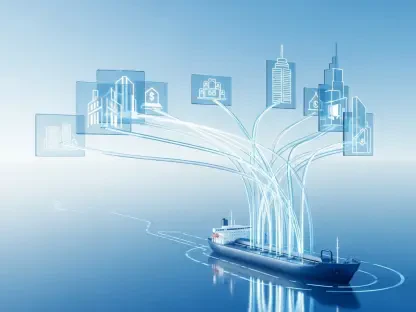As we dive into the evolving landscape of energy and utilities in New Jersey, I’m thrilled to sit down with Christopher Hailstone, a seasoned expert in energy management, renewable energy, and electricity delivery. With his deep insights into grid reliability and security, Christopher offers a unique perspective on the challenges and opportunities facing utilities like Public Service Enterprise Group (PSEG) amidst financial growth, regulatory shifts, and ambitious clean energy goals. In this conversation, we explore how PSEG is navigating rising utility rates, collaborating with the incoming administration, and contributing to a sustainable energy future for the Garden State.
Let’s start with PSEG’s financial performance. They’ve reported a 20% increase in year-to-date income for Q3 2025, reaching $1.8 billion, with higher electric and gas rates playing a big role. Can you walk us through what’s driving this growth?
Certainly, Emilia. The 20% income boost for PSEG reflects a combination of factors, but the higher electric and gas rates are indeed a significant driver. These rate hikes often stem from approved regulatory adjustments that allow utilities to recover costs for infrastructure upgrades, maintenance, and reliability improvements. Additionally, PSEG has likely benefited from increased demand, especially from sectors like data centers, which are putting more pressure on the grid. Investments in operational efficiencies and possibly favorable market conditions for their non-regulated assets also contribute. But it’s worth noting that while this growth looks great on paper, it comes at a time when customers are feeling the pinch from those higher bills, creating a delicate balancing act for the company.
Speaking of customer impact, PSE&G currently has the highest electric bills in New Jersey, with a 36% increase last summer. How is PSEG planning to address growing concerns about affordability for residents?
Affordability is a critical issue, and PSEG is well aware of the burden these rate increases place on customers. From what I understand, they’re exploring a multi-pronged approach. This includes offering energy efficiency programs to help consumers reduce usage and lower their bills over time. There’s also a focus on payment assistance plans for those struggling to keep up. Beyond that, PSEG is under pressure to work with regulators to potentially moderate future rate hikes by spreading cost recovery over longer periods. It’s a tough spot because they need revenue to maintain and upgrade the grid, but public and political pushback is forcing them to prioritize customer relief in creative ways.
There’s been talk from equity analysts about PSEG possibly offering rate concessions. Can you shed some light on what kinds of measures might be on the table to ease the burden on customers?
Yes, the idea of rate concessions has been floating around as a way to address affordability. These could take several forms. One option is extending the timeline for cost recovery on major capital investments, which would lower the immediate impact on monthly bills. Another could be temporary rate credits, similar to what we’ve seen in the past, to provide short-term relief. There’s also the potential for negotiated settlements with regulators to cap rate increases for a set period. These concessions aren’t just about goodwill—they’re strategic, as they can help build trust with both customers and the incoming administration, potentially smoothing the path for future regulatory approvals.
How does PSEG manage the tension between achieving revenue growth and keeping rates affordable for New Jersey residents?
It’s a tightrope walk for sure. PSEG’s revenue growth often comes from necessary investments in grid modernization and reliability—think storm hardening or accommodating new load growth from data centers. But every dollar they invest needs to be recovered through rates, which directly impacts customers. To balance this, they lean on regulatory frameworks that allow for gradual rate adjustments rather than sudden spikes. They also prioritize cost efficiencies internally to minimize what gets passed on. At the same time, they’re engaging with stakeholders to demonstrate the value of these investments, like improved service reliability or cleaner energy options, hoping to justify the costs in the public’s eye. It’s never a perfect solution, but communication and transparency are key here.
Shifting gears to the political landscape, New Jersey’s incoming governor, Mikie Sherrill, has promised to declare a state of emergency on utility costs and freeze rates on her first day. How does PSEG view this proposal, and are they prepared to collaborate on this front?
Governor-elect Sherrill’s proposal is a bold statement on affordability, and it’s caught the attention of utilities like PSEG. From their perspective, a rate freeze could limit their ability to recover costs in the short term, which might delay critical projects. However, PSEG has publicly expressed a willingness to work with her administration. They’re likely preparing by modeling scenarios where rates are capped and identifying areas where they can cut costs or delay non-essential spending. Collaboration will be crucial, and I expect PSEG to come to the table with proposals that align with her goals while protecting their operational needs. It’s about finding common ground, especially on long-term affordability solutions.
Governor-elect Sherrill has also emphasized the need for more transparency from utilities. What steps might PSEG take to meet these demands?
Transparency is becoming a non-negotiable in the utility sector, and PSEG will need to step up. They could start by providing more detailed breakdowns of rate components on customer bills, showing exactly where the money goes—whether it’s infrastructure, energy procurement, or regulatory fees. Hosting public forums or publishing regular reports on their investments and performance metrics is another way to build trust. Additionally, they might enhance digital tools, like online dashboards, to give customers real-time insights into usage and costs. These steps not only address transparency demands but also position PSEG as a proactive partner in the eyes of both the administration and the public.
On the topic of clean energy, Sherrill wants to massively expand clean power in New Jersey. How can PSEG contribute to this vision through new projects or investments?
PSEG is well-positioned to play a major role in New Jersey’s clean energy push. While they’re currently restricted from owning generation, there’s legislative momentum to change that, and PSEG has expressed interest in utility-owned solar and storage projects. They’ve already done large-scale solar on brownfield and landfill sites, and there’s potential to scale that up. They could also invest in community solar programs or partner on offshore wind initiatives, which align with the state’s goals. Beyond generation, PSEG can support clean energy by upgrading transmission infrastructure to integrate more renewables into the grid. Their expertise in grid management makes them a key player in ensuring that new clean power is reliable and accessible.
Analysts have suggested that PSEG might increase spending on battery storage, transmission, and energy efficiency. Can you tell us more about potential plans or projects in these areas?
Absolutely. Battery storage is a hot topic right now, especially as a way to balance intermittent renewable sources like solar and wind. PSEG is likely exploring regulated storage projects that could stabilize the grid and store excess clean energy for peak demand times. On the transmission front, they’re looking at upgrades to handle growing loads, particularly from data centers, while also enabling more renewable integration. Energy efficiency is another focus—think programs that incentivize customers to adopt smart thermostats or upgrade appliances, reducing overall demand. While specific projects haven’t been fully detailed publicly, these areas are critical for meeting both state energy goals and customer needs, so I expect we’ll see concrete announcements soon, especially with regulatory support.
New Jersey imports 40% of its electricity, and there’s growing concern about a power shortage. How does PSEG see its role in addressing this through clean energy or other solutions?
The power shortage concern is real, and PSEG recognizes that New Jersey needs more in-state generation to reduce reliance on imports. Through potential changes in legislation, they could directly contribute by developing utility-owned generation, particularly carbon-free options like solar or nuclear uprates at facilities like Salem, where they’re planning a 200 MW addition. On the clean energy side, their role could involve facilitating more renewable projects by ensuring grid readiness and advocating for policies that attract investment in local power. They’re also working with data center developers to secure reliable, carbon-free power from their nuclear fleet. Beyond generation, PSEG’s focus on transmission enhancements and demand-side management will be crucial in stretching existing capacity while new solutions come online. It’s a multifaceted challenge, and they’re positioning themselves as a central problem-solver.
Looking ahead, what is your forecast for the future of clean energy adoption in New Jersey, especially with the new administration’s ambitious goals?
I’m cautiously optimistic about clean energy adoption in New Jersey. With Governor-elect Sherrill’s strong push for cheaper, cleaner power, we’re likely to see accelerated policies and incentives for renewables like solar, wind, and storage over the next few years. The state’s existing commitment to emissions reduction, combined with potential legislative changes allowing utilities like PSEG to own generation, could unlock significant investment. However, challenges remain—grid integration, funding, and balancing affordability with infrastructure costs will test the pace of progress. I expect a surge in public-private partnerships and innovative financing models to bridge those gaps. If the administration and utilities can align on transparency and measurable outcomes, New Jersey could become a national leader in clean energy within the decade. But it’ll require sustained collaboration and adaptability to navigate the inevitable hurdles.









